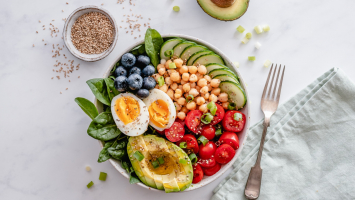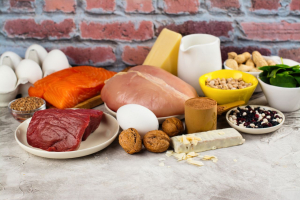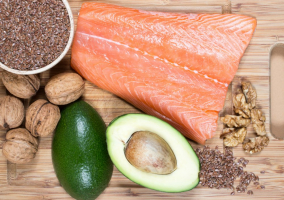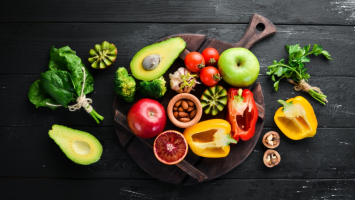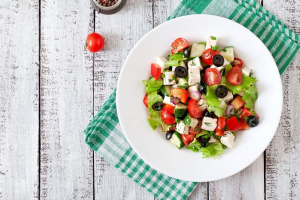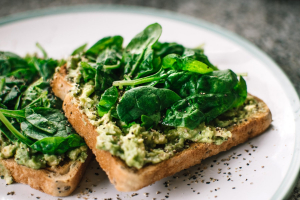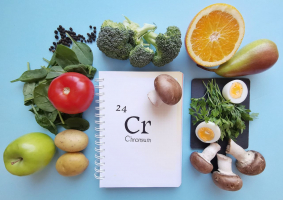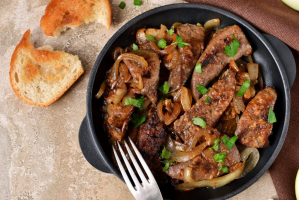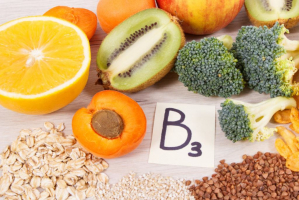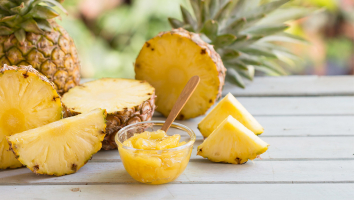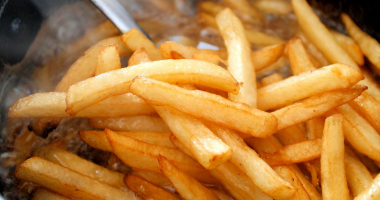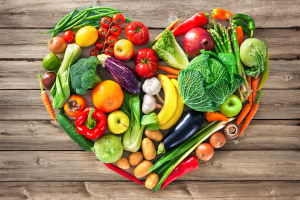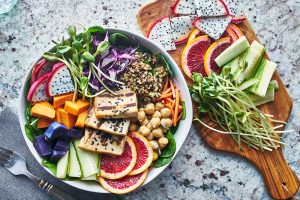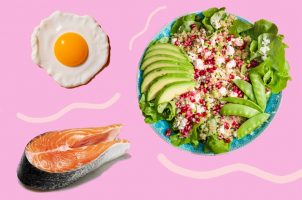Top 8 Foods That Pack a Nutritional Punch
The body needs food to be healthy. It is not an easy procedure to digest food. If one wants to acquire the correct quantity of nutrients from their diet during ... read more...this period, there are a lot of aspects that need to be taken into account. Many foods are both pleasant and healthful. Your meals will be colorful, adaptable, and healthy if you pile your plate high with fruits, veggies, excellent protein sources, and other whole foods. Here are the greatest foods that pack a nutritional punch.
-
Teff is a tropical grain crop from the Poaceae family of grasses. Primarily cultivated in Ethiopia and Eritrea, it is believed to have originated there thousands of years ago. It can thrive in a variety of environments, is drought-resistant, and comes in both darker and lighter kinds, with brown and ivory being the most common. It is also the tiniest grain known to man, being only one hundredth the size of a wheat kernel. Teff tastes nutty and earthy. Light variants frequently have a subtle sweetness to them. Because it is gluten-free, it has recently gained a lot of favor in the West.
It's vital to note that depending on the type, growing region, and brand, teff's nutritional profile tends to differ considerably. Teff is still a rich provider of copper, magnesium, potassium, phosphorus, manganese, zinc, and selenium when compared to other cereals. Additionally, it contains all of the essential amino acids, which are the protein's building blocks in your body, making it a fantastic source of protein. Lysine, an amino acid that is sometimes absent in other grains, is unusually abundant in it. Lysine is necessary for the synthesis of proteins, hormones, enzymes, collagen, and elastin. It also aids in the immune system, energy generation, and calcium absorption.
Teff is often processed and consumed as a whole grain rather than being separated into the germ, bran, and kernel, as is the case with wheat processing, due to its tiny size. Teff may also be crushed into flour to be used as a whole grain without gluten. Teff flour is fermented with yeast that grows on the grain's surface in Ethiopia to create the classic sourdough flatbread known as injera. Typically, Ethiopian dinners start with this soft, spongy bread. It is made by sprinkling a hot griddle with a batter made of fermented teff flour. Teff flour is a fantastic gluten-free substitute for wheat flour when making packaged foods like pasta or bread. Additionally, it frequently gives products that contain wheat an added nutritional boost.
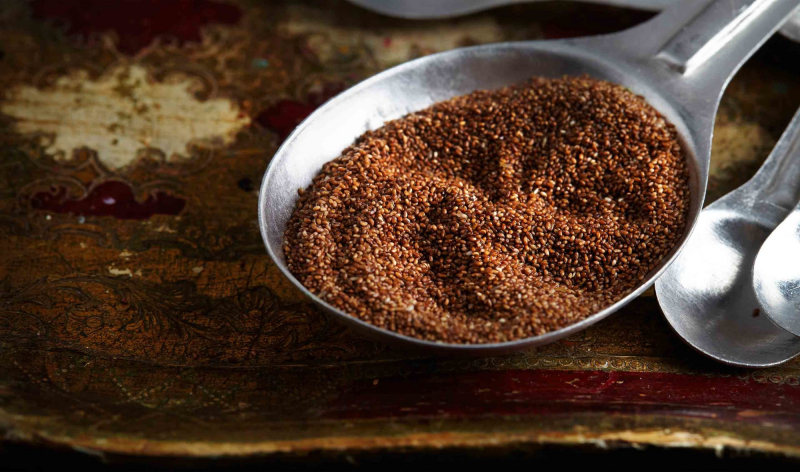
Precision Nutrition 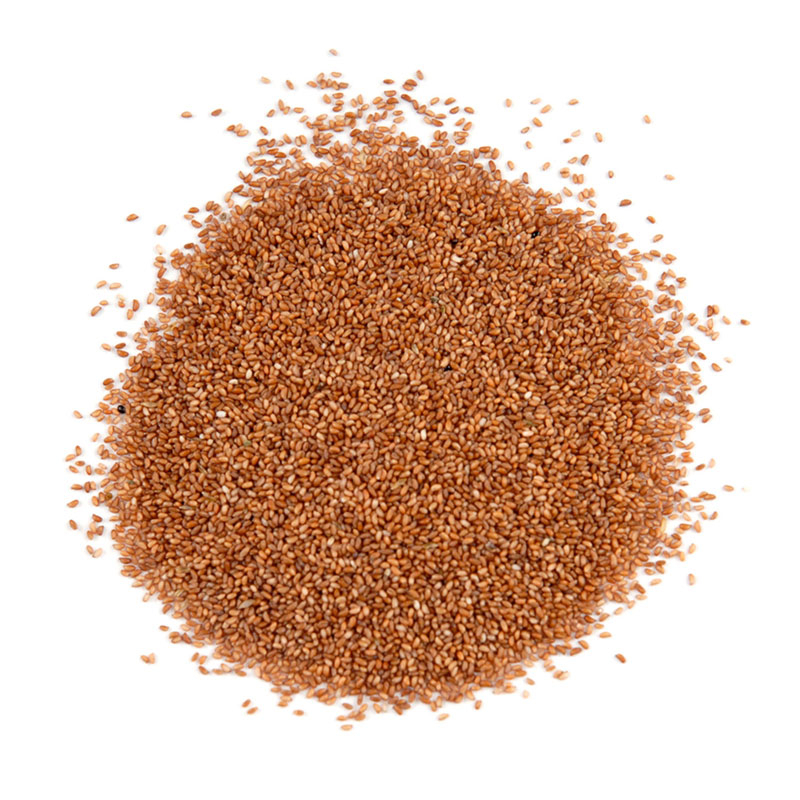
chieftainwildrice.com -
Nearly as much protein is found in hemp seeds as in soybeans. 3.25 tablespoons or 30 grams (g) of seeds contain 9.46 g of protein. These seeds contain all nine of the necessary amino acids, making them a complete source of protein. All proteins are composed of amino acids as their building ingredients. Nine of these acids cannot be produced by the body, hence they must be ingested through food. Hemp seeds are a significant supplement to a vegetarian or vegan diet because relatively few plant-based foods offer full sources of protein. Particularly abundant in the amino acid arginine, which is good for the heart, are hemp seeds.
Alpha-linolenic acid (ALA), an omega-3, and other necessary fatty acids are abundant in hemp seeds. Essential fatty acids must come from the food since the body cannot generate them. They are essential for sustained health. Omega-3 to omega-6 ratio is also significant. People often consume too many omega-6 fatty acids and too little omega-3 fatty acids, but include hemp seeds in the diet may assist to encourage a balance. Incorporating hemp seeds and hemp seed oil into the diet of hens resulted in eggs with higher amounts of omega-3s in the yolks and a healthier omega-3 to omega-6 ratio, according to the findings of a 2015 animal research.
Anybody can buy split, ground, or shelled seeds. One can use a food processor or a mortar and pestle at home to remove the seeds' tough outer shells. Whole seeds offer weight to the diet and also include fiber, which can help with digestion. Try include hemp seeds in your diet by sprinkling whole or crushed seeds over cereal or yogurt, using the seeds in smoothies, using hemp seeds and other omega-3-rich seeds in baking, producing your own hemp milk at home, or putting hemp seeds on a salad with other seeds or nuts.
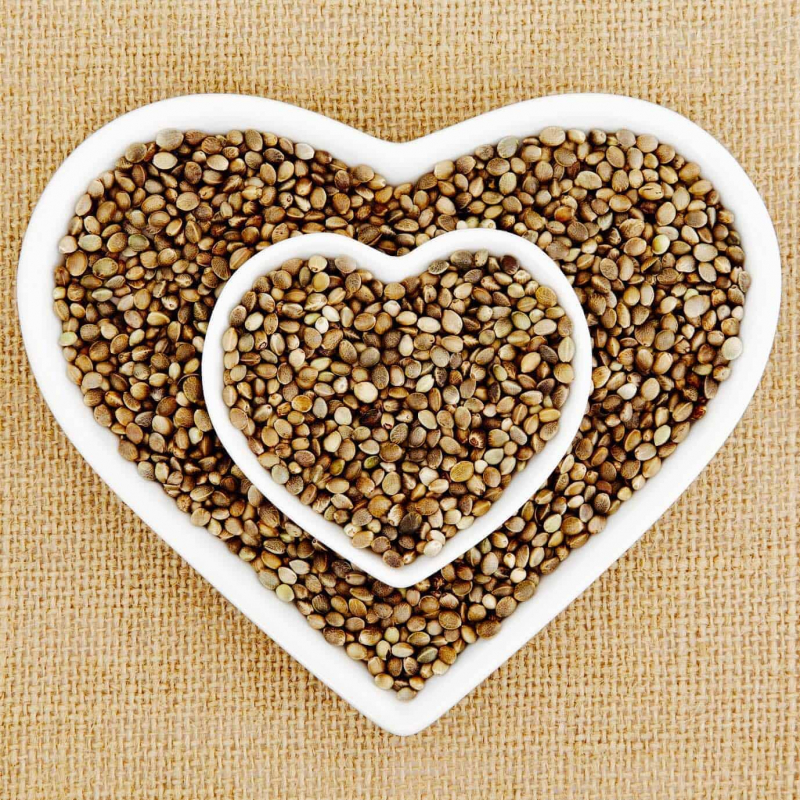
Power of Positivity 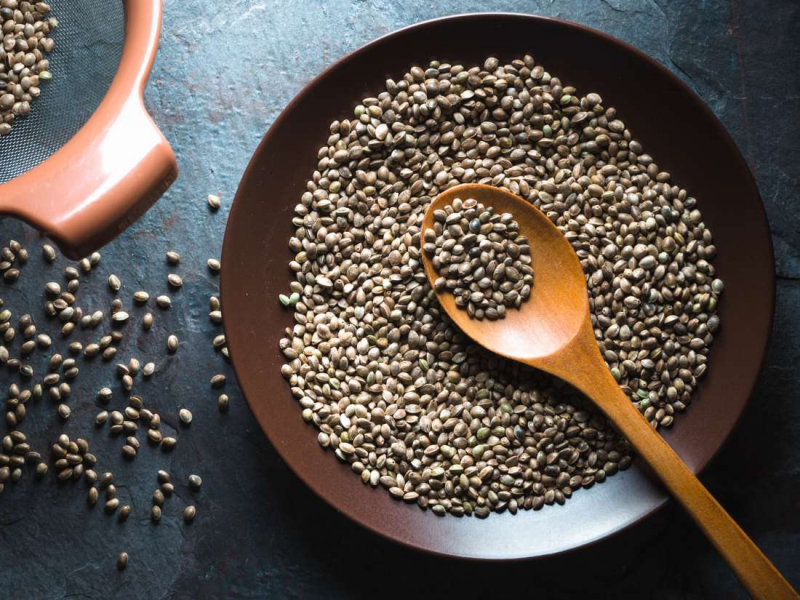
Medical News Today -
A kind of cherry found in the Prunus genus called a "tart cherry" has a tarter flavor than a typical sweet cherry. This cherry, Prunus cerasus, is indigenous to Europe and Asia and is most frequently turned into a nutrient-rich juice. Tart cherries have low amounts of iron and calcium and are a good source of vitamins A and C, dietary fiber, and other nutrients. These cherry have just 50 calories per 100 grams. These cherry include significant quantities of ellagic acid and quercetin, two more potent antioxidants, and have a greater anthocyanin concentration than practically any other meal.
By lowering oxidative stress and plaque buildup and avoiding several neurodegenerative illnesses, the high quantities of anthocyanins can enhance brain health. These cherry are excellent for metabolic syndrome, as well as for lowering obesity, gout, and muscular discomfort thanks to their low calorie and high nutritional content. These cherries can lessen stress hormone levels, according to studies. It can help relieve the symptoms of insomnia as well as the pain and discomfort associated with gout, arthritis, and other common inflammatory conditions. The immune system will be strengthened and bone mineral density will be protected by adequate levels of vitamin C and other important minerals.
People adore the amazing sweet and tangy flavor of tart cherries by the handful. Scoop in some dried cherries to give your trail mix and granola treats a cheerful cherry makeover. Your midday nibbles will definitely improve with the tangy taste. Or you might add tart cherries to your yogurt parfait or dish of porridge in the morning. They are a delectable addition to hot cereal, Greek yogurt, frozen yogurt, and other desserts.
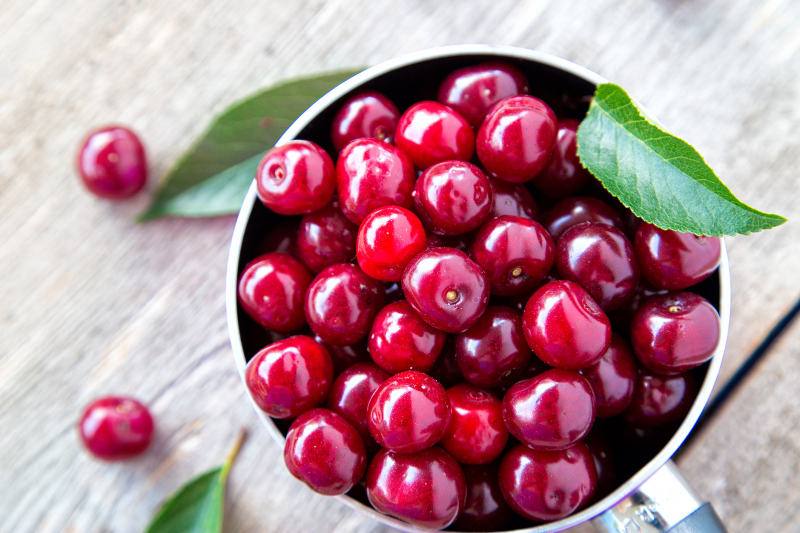
blog.puriumcorp.com 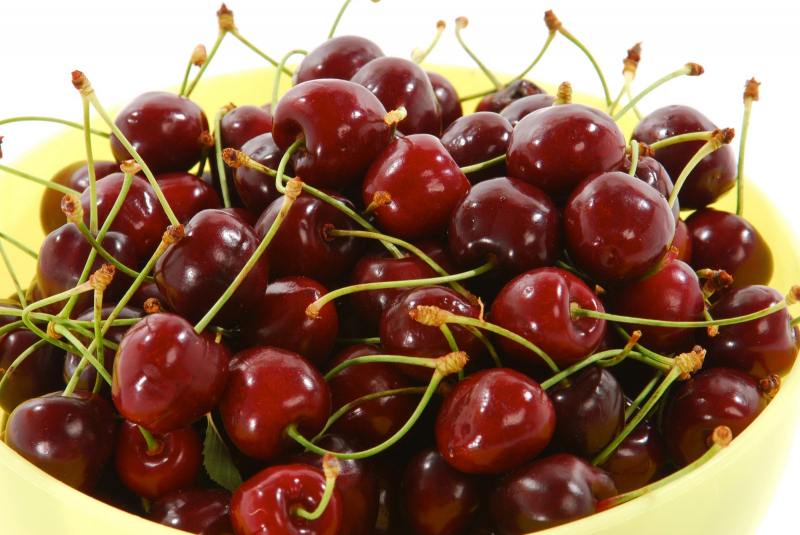
blogspot.com -
Blueberries are linked to cranberries, bilberries, and huckleberries since they are members of the heather family. Blueberries come in a variety of varieties, thus their look may differ significantly. Highbush and lowbush blueberries are the two most popular types. The main nutrients in blueberries are 14% carbohydrates, 84% water, and trace quantities of protein and fat. Although blueberries mostly include simple carbohydrates like fructose and glucose, they also contain a little amount of fiber. The glycemic index (GI), which gauges how rapidly various meals boost blood sugar levels, gives these berries a score of 53. Due to its relatively low score, blueberries are safe for diabetics and shouldn't result in significant blood sugar rises.
Sugar content in blueberries is average at 15 grams per cup (148 grams). They do not, however, negatively affect blood sugar levels, which may be related to their high bioactive chemical concentration. The anthocyanins in blueberries may improve blood sugar regulation, according to test-tube research. Promising benefits have also been seen in human investigations. In a six-week trial, it was shown that giving obese individuals with a high risk of developing diabetes two blueberry smoothies per day improved their insulin sensitivity. By inhibiting specific digestive enzymes and preventing blood sugar increases after a high-carb meal, blueberries may also directly alter blood sugar levels.
Fresh, frozen, freeze-dried, and used in jams, jellies, and syrups are all options for blueberries. Make sure to look for added sugars on the label of dried and frozen blueberries. Choose all-fruit spreads without additional sweeteners, juices, or fillers when choosing jellies or jams.
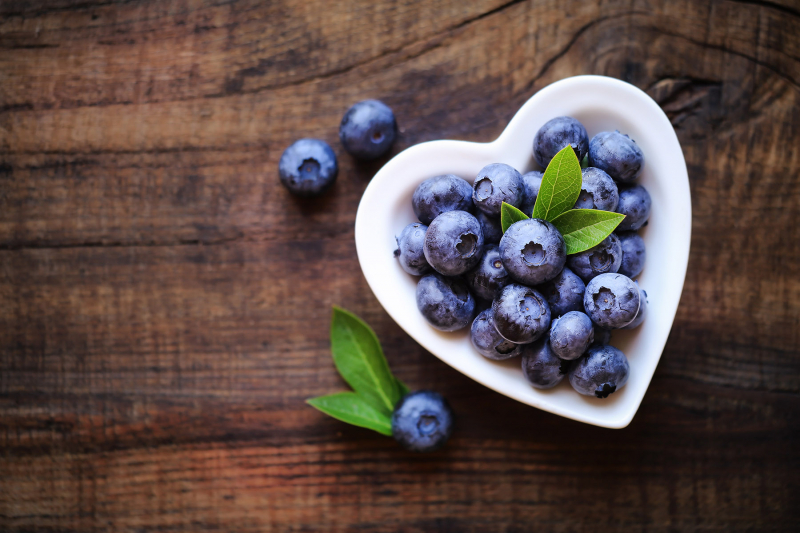
researchfeatures.com 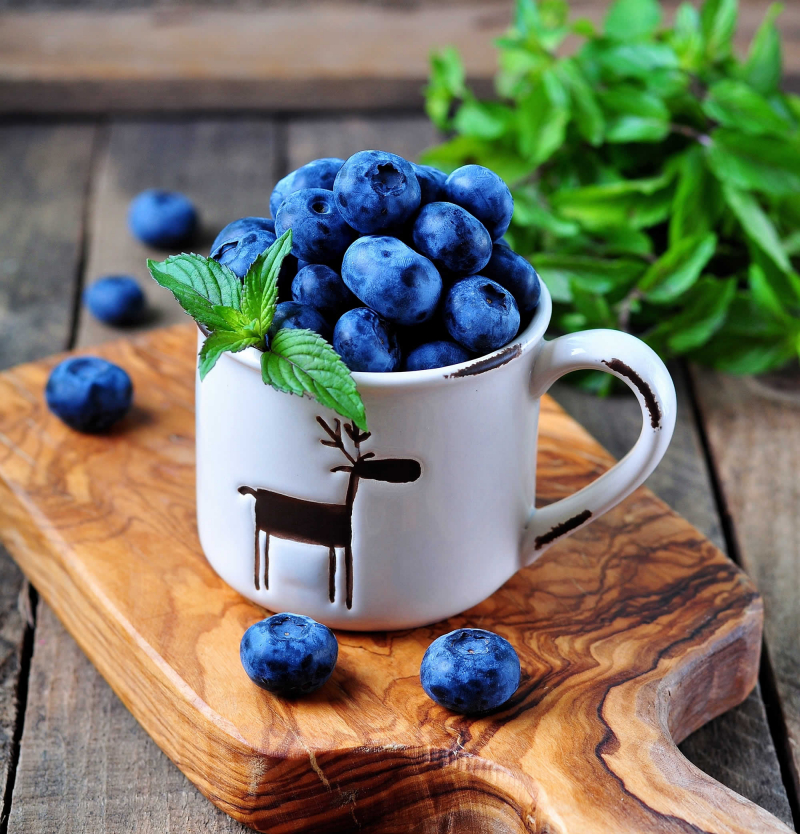
waimeanurseries.co.nz -
It would be an understatement to suggest that walnuts are a nutrient-rich meal. Healthy fats, fiber, vitamins, and minerals are just a few of the ways that walnuts may benefit your health. In fact, there is so much interest in this particular nut that for the past 50 years, academics and business leaders have met yearly at the University of California, Davis, for a conference on walnut health to examine the most recent studies. Since "bad" LDL cholesterol causes atherosclerosis, walnuts are a great source of antioxidants that can help your body battle oxidative damage. Walnuts are a strong source of plant-based omega-3 fatty acids, which may help lower the risk of heart disease.
Walnuts are a very nutrient-dense nut. Compared to other popular nuts, they have much more beneficial omega-3 fats and stronger antioxidant activity. This robust nutritional profile helps explain why walnuts provide so many health advantages, including less inflammation and better risk factors for heart disease. The numerous ways that walnut fiber and plant components, including as polyphenols, may interact with your gut bacteria and benefit your health are currently being discovered by scientists. In the years to come, it's probable that you'll continue to hear more about walnuts as more study is done on their advantageous health impacts. Nevertheless, there are many good reasons to start include them in your diet now. Get in the habit of including them in grain meals, dusting them on spaghetti, adding them to salads with fresh herbs, blending them to make delectable spreads and dips, and combining them with vanilla, cloves, and cinnamon in desserts.
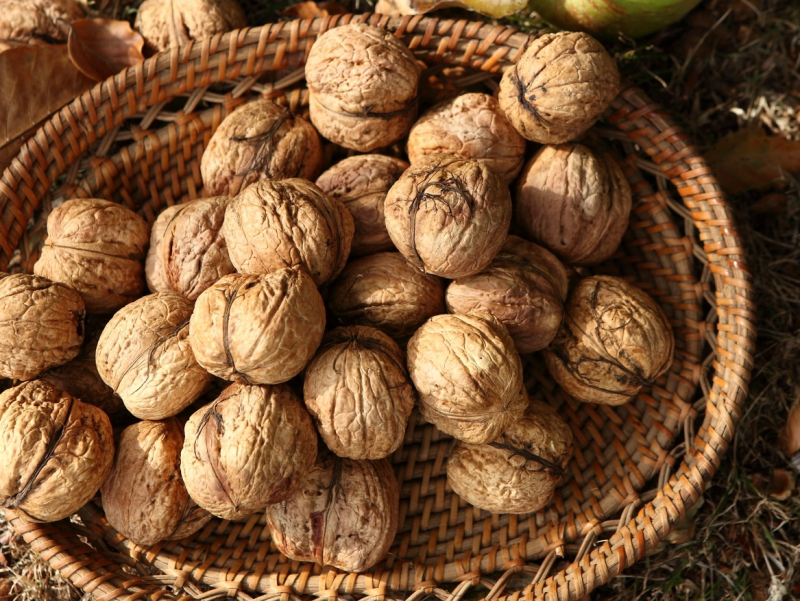
shakahariblog.com 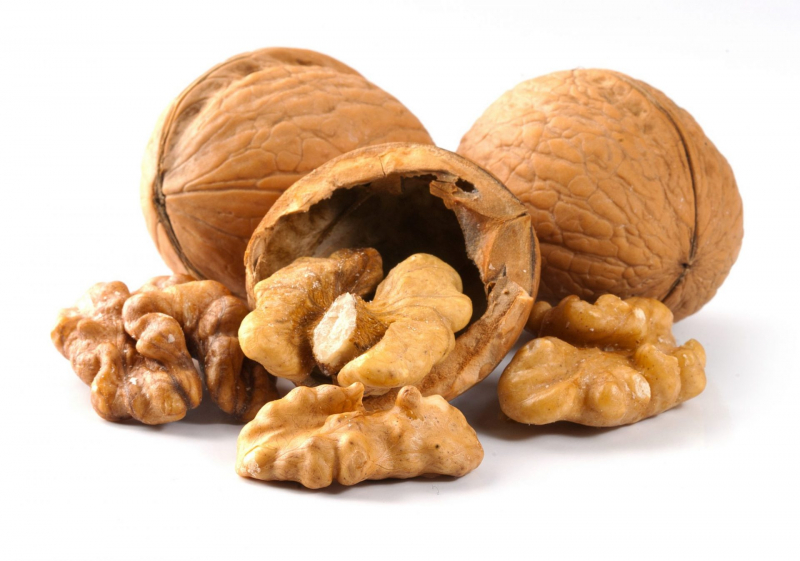
naturalhealth365.com -
Quinoa has been consumed for over 5,000 years, and because to its amazing nutritional profile, it is becoming more and more popular today. It is naturally gluten-free and rich in fiber, vitamins, minerals, and antioxidants. It is also a fantastic source of protein. Quinoa is not simply a healthy food, though. It comes in several shades, each with a slightly different flavor, texture, and nutritional value. Thiamine, riboflavin, and vitamin B6, which are all necessary for healthy brain function and metabolism, are also present in greater than 10% of the DV in the same serving size. It is noteworthy that quinoa has a greater protein content than a lot of other cereal grains, such as wheat, rice, and barley.
In fact, it's one of the few plant meals that has lysine, a necessary amino acid that is absent from most cereals, and all nine of the essential amino acids. Red quinoa is regarded as a full protein as a result. Red quinoa is similar in terms of calories, fat, protein, carbohydrates, and vitamin content to other hues of this seed. Its content of plant components distinguishes it. Red quinoa in particular includes betalains, which have antioxidant effects and are the source of this variety's distinctive color. Additionally, it has more antioxidants than other quinoa kinds, which may be good for heart health. It could enhance the overall nutritional content of a gluten-free diet as a gluten-free pseudocereal.
People who consume quinoa may feel fuller than those who eat wheat or rice. In comparison to eating bread, eating quinoa may lower triglyceride levels in the blood after meals. Quinoa is produced by mixing two parts liquid to one part dry quinoa, just like rice. Quinoa may be cooked in water, stock, or other liquids, and one cup of dried quinoa will make three cups of cooked quinoa. Additionally, while cooking, you can add herbs and spices like bay leaves, marjoram, thyme, black pepper, or garlic or onion powder.
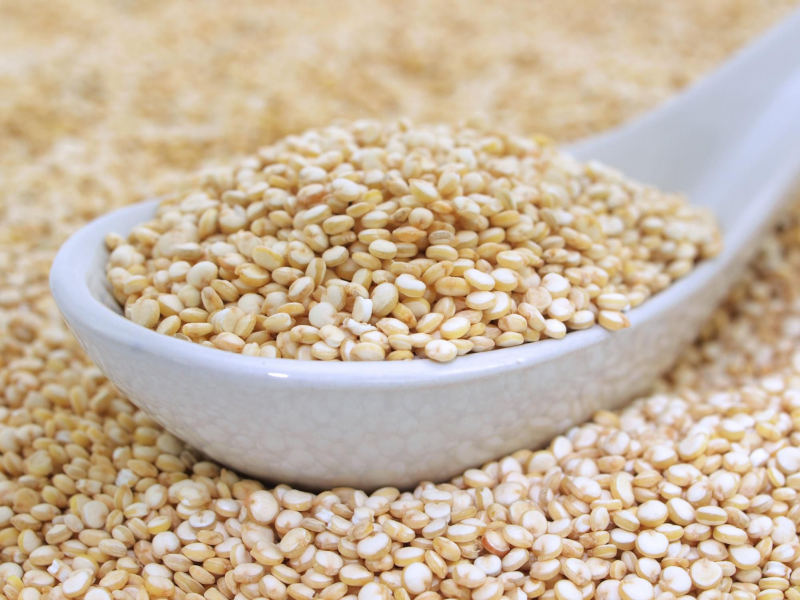
foodreference.about.com 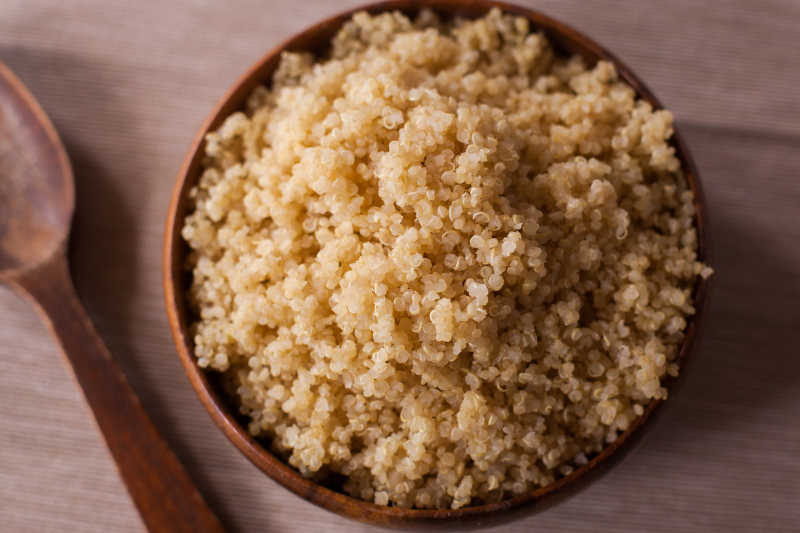
thedolcediet.com -
Kale is the king of all the incredibly nutritious greens. One of the healthiest and most nourishing plant meals available, without a doubt. Kale is bursting with healthy substances, some of which are potent anti-inflammatory agents. Popular vegetable kale belongs to the cabbage family. It is a cruciferous vegetable, the same family as Brussels sprouts, cabbage, broccoli, cauliflower, and collard greens. Kale comes in a wide variety of varieties. The form of the leaves might be smooth or curly, and they can be either green or purple. Curly kale, also known as Scots kale, is the most popular kind of kale. It features green, curly leaves and a stiff, fibrous stem.
Additionally, it has 3% or more of the Daily Value (DV) for thiamin, riboflavin, niacin, iron, and phosphorus. This has 33 calories overall, 6 grams of carbohydrates, 2 of which are fiber, and 3 grams of protein. Alpha linolenic acid, an omega-3 fatty acid, makes up the majority of the fat in kale's relatively low fat content. Kale is one of the most nutrient-dense vegetables available due to its very low calorie count. A great way to significantly boost your diet's overall nutrient content is to eat more kale. Kale also contains a number of potent antioxidants, such as quercetin and kaempferol, which have numerous positive health effects.
The epitome of a healthy diet is kale. You might be surprised by how versatile kale is if you haven't used it for much more than sautéing or juicing. It may be smooth when cooked or mellow in a soup, sharp in a salad, crunchy as "chips", etc. All methods of preparing kale are simple, and there are a variety of dishes that will change the way you typically serve this tasty, high-nutrient vegetable.
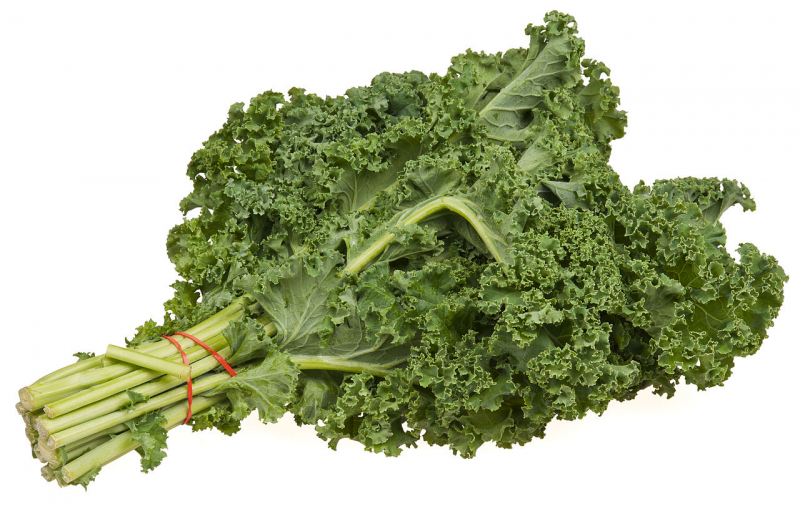
Wikimedia 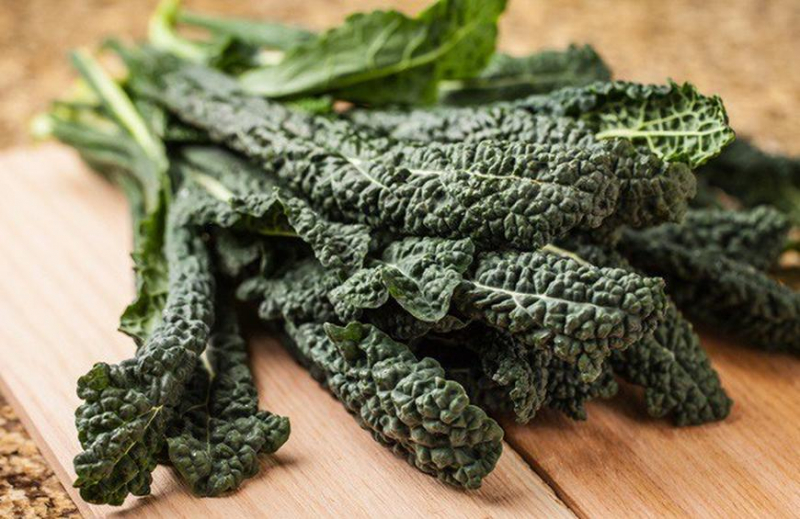
The Daily Meal -
The plant Salvia hispanica L. produces small black or white seeds called chia seeds. They are said to have originated in Central America. Despite their little size, chia seeds are very nutrient-dense. These seeds have long been hailed for their health advantages and were a mainstay of the ancient diets of the Aztec and Maya. Chia seeds include antioxidants, minerals, fiber, and omega-3 fatty acids that may support strong bones, heart health, and better blood sugar control. Chia seeds are also adaptable and may be utilized in a variety of dishes. Chia seeds are very nutritious in spite of their small size. They include a wealth of vitamins, protein, fiber, and omega-3 fatty acids.
In addition to being abundant in fiber, omega-3 fatty acids, antioxidants, and minerals, chia seeds are very simple to cook. According to studies, they have a variety of health advantages, from weight loss to a lower chance of heart disease. But before any definitive conclusions can be drawn, more human subjects-only research is required. Chia seeds may benefit your health, so think about including them in your diet if you want to benefit from them. They go well with smoothies, oatmeal, yogurt, baked goods, and other foods.
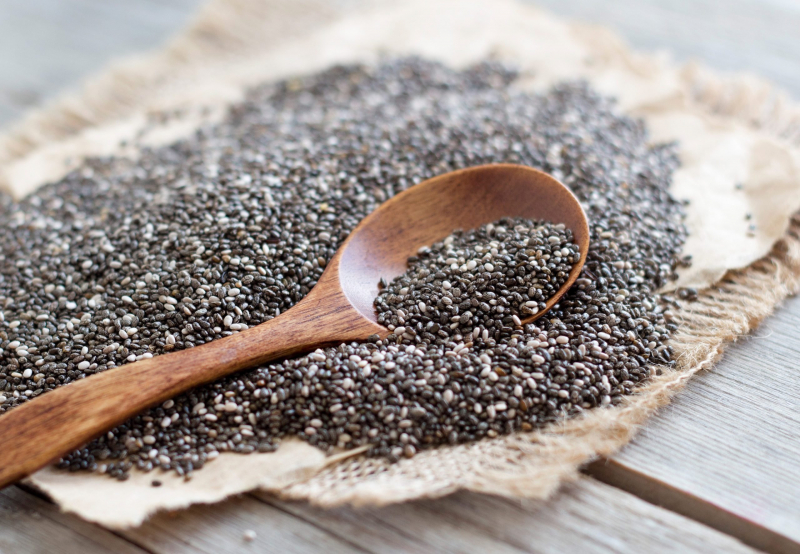
thehealthy.com 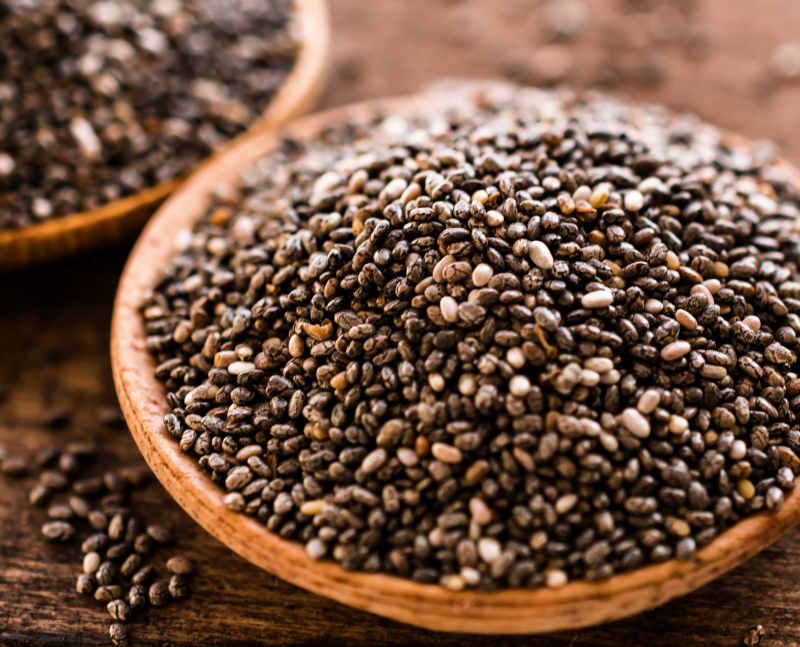
The Spruce Eats










